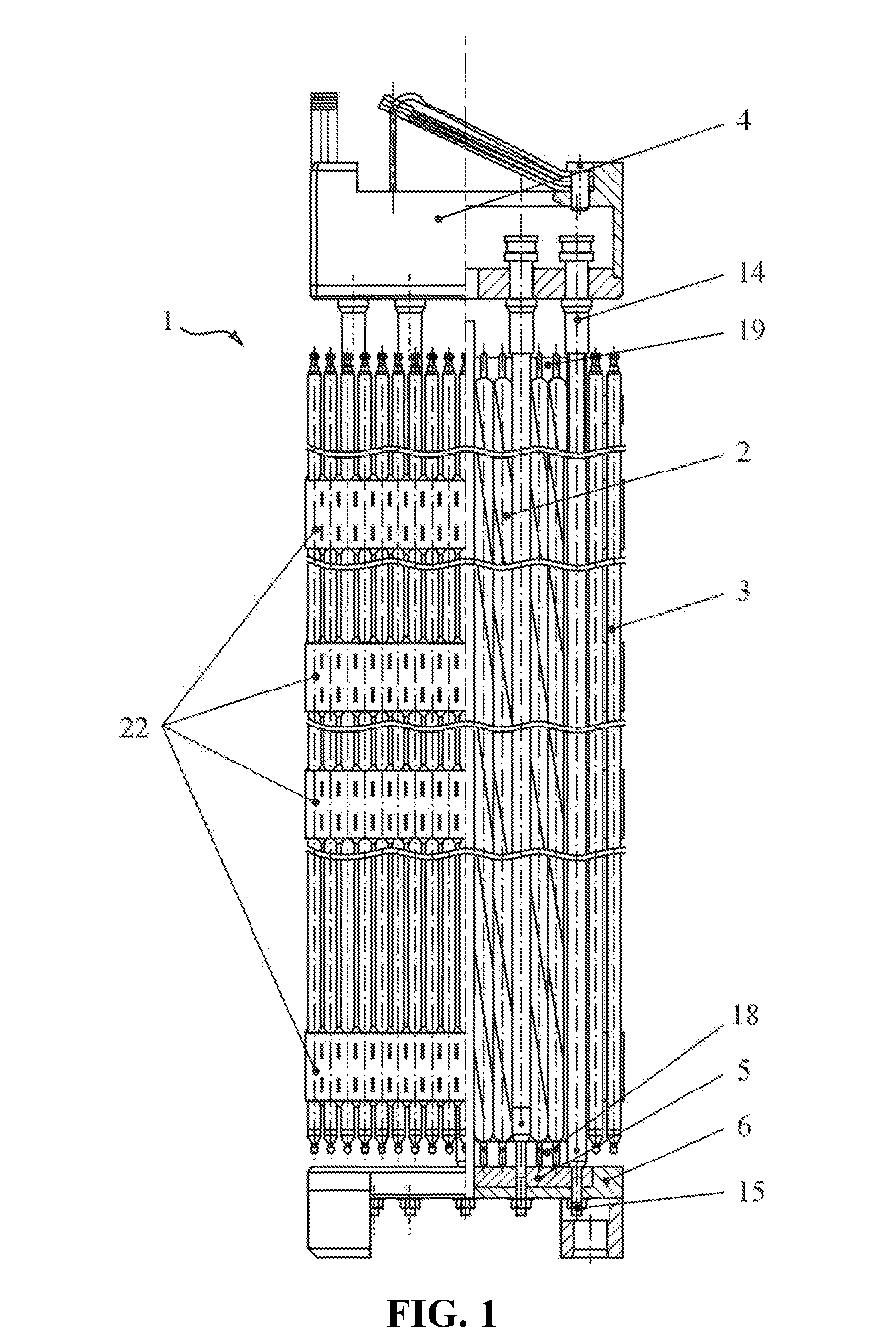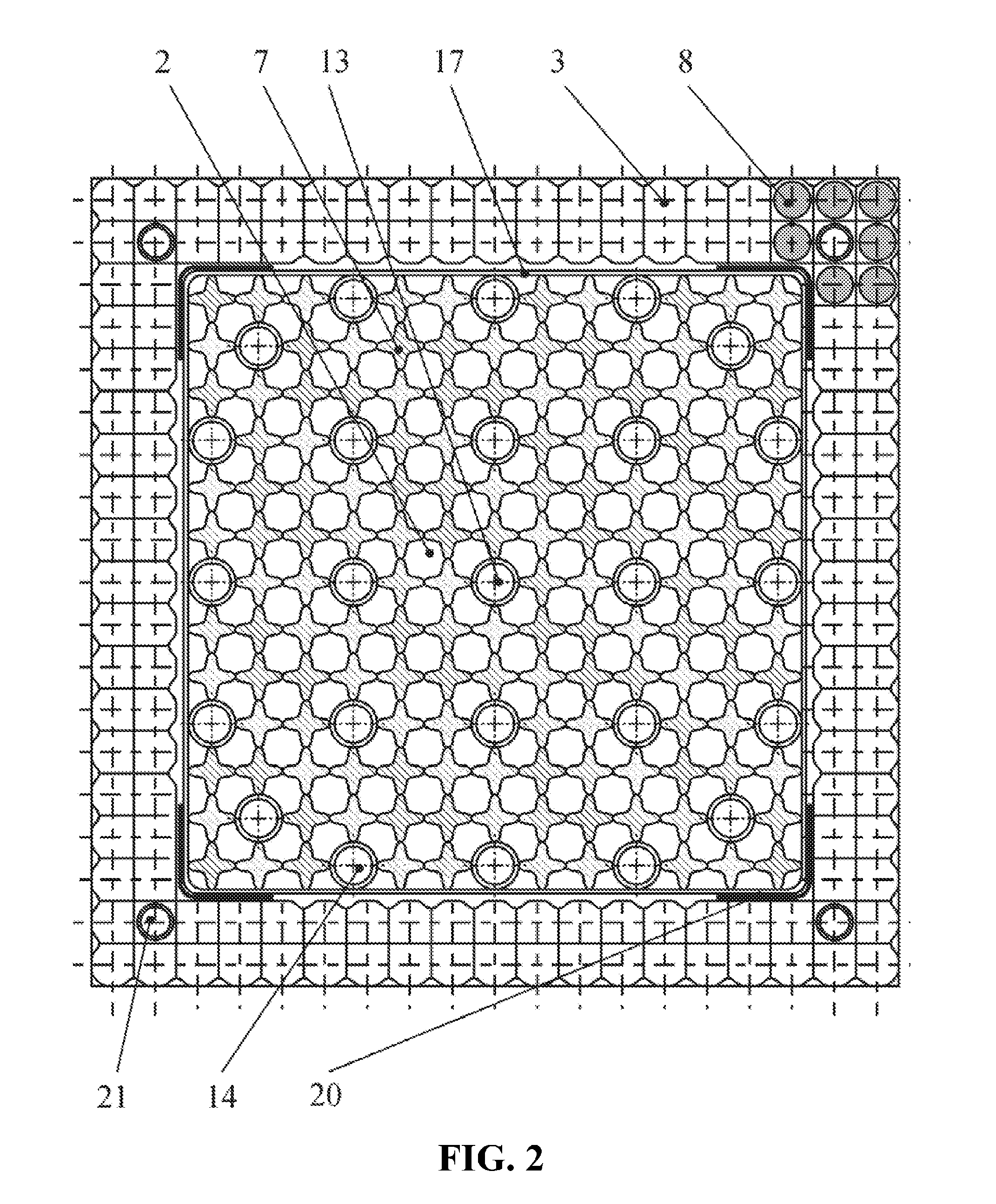Light-water reactor fuel assembly (alternatives), a light-water reactor, and a fuel element of fuel assembly
a fuel element and light-water reactor technology, applied in the direction of nuclear reactors, greenhouse gas reduction, etc., can solve the problems of not having adequate fossil fuel resources, a considerable threat to the world security, and the proliferation of materials that can be used in nuclear weapons, so as to facilitate the placement of seed fuel elements.
- Summary
- Abstract
- Description
- Claims
- Application Information
AI Technical Summary
Benefits of technology
Problems solved by technology
Method used
Image
Examples
first embodiment
[0054]A fuel assembly designated as collective item 1 according to the invention is shown in FIG. 1. Fuel assembly 1 contains a seed region 2, a blanket region 3, a upper nozzle 4, a seed region lower nozzle 5, and a blanket region lower nozzle 6. As shown in FIG. 2, seed region 2 contains fuel element bundle 7, while blanket region 3 contains fuel element bundle 8. Each of the fuel elements in bundle 7 has a four-lobed profile that forms spiral spacer ribs, 9 (FIG. 6), along the length of a fuel element and contains a kernel, 10 (FIG. 7), that includes enriched uranium or plutonium, as well as a cladding made from a zirconium alloy, 11, that encircles it. A displacer, 12, is located inside kernel 10. All the fuel elements 7 make contact with each adjacent fuel element in bundle 7 at the spiral spacer rib 9 contact points. The spiral spacer rib 9 contact points stand away from one another in the axial direction by a distance equal 25% of the spiral line pitch value.
[0055]Each of the...
second embodiment
[0060]A fuel assembly designated as collective item 1′, according to the invention, is shown in FIG. 3. This assembly contains a seed region 2′, a blanket region 3′, a upper nozzle 4′, a seed region lower nozzle 5′, and a blanket region lower nozzle 6′. As shown in FIG. 4, seed region 2′ contains fuel elements' bundle 7′ while blanket region 3′ contains fuel elements' bundle 8′.
[0061]Similar to the fuel assembly that conforms to the first embodiment of the invention, each of fuel elements 7′ has a four-lobed profile that forms spiral spacer ribs 9 (FIG. 6) along the length of the fuel element and contains a kernel 10 (FIG. 7), which includes enriched uranium or plutonium, as well as a cladding 11, made from a zirconium alloy that surrounds the kernel. Displacer 12 is located inside of kernel 10. Each of fuel elements 8′ has a round shape in the plan view and is made from various ceramic formulations of thorium and uranium.
[0062]The fuel elements module 7′ and 8′ are arranged in the ...
PUM
 Login to View More
Login to View More Abstract
Description
Claims
Application Information
 Login to View More
Login to View More - R&D
- Intellectual Property
- Life Sciences
- Materials
- Tech Scout
- Unparalleled Data Quality
- Higher Quality Content
- 60% Fewer Hallucinations
Browse by: Latest US Patents, China's latest patents, Technical Efficacy Thesaurus, Application Domain, Technology Topic, Popular Technical Reports.
© 2025 PatSnap. All rights reserved.Legal|Privacy policy|Modern Slavery Act Transparency Statement|Sitemap|About US| Contact US: help@patsnap.com



